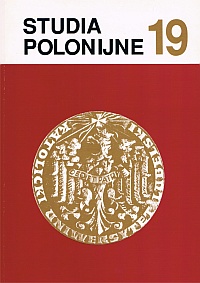The Institutions of Religious Life for Poles in the States Established after the Dismantling of the USSR
Main Article Content
Abstract
In the empire of czarist Russia the most important religious institutions for Poles were parishes of the Catholic Church (of the western rite). In 1917 there were c. 1200 churches, chapels and oratories. In the USSR they were all liquidated, except the churches in Moscow and Leningrad. The Soviet authorities launched the same process of liquidation of the Church in the territories invaded after 1945. With the exception of Lithuania and Latvia, where the former structure of pastoral care had not been destroyed, until the 1980s some barely 120 parishes had remained in Belorus and the Ukraine out of more than 1000. The process of regeneration of the institution of the Catholic Church, begun during the time of M. Gorbatchov's perestroika, permitted to rebuild, and partly establish, c. 1000 parishes. At the moment, in c. 1200 parishes in the former USSR there are regular or occasional services said in the Polish language for Poles. A new element in their work is the introduction of national languages: Byelorussian, Ukrainian, and Russian. They will influence the self-identification of the faithful of the Catholic Church, above all, the Poles. Outside the Baltic countries and Russia the Polish language is spoken in other institutions than the Church, e.g. in the theological seminaries in Belorus and the Ukraine. This language is indispensable in the process of education (the teaching staff, handbooks, and literature). Other religious institutions, which the Poles attend (associations, magazines, and radio broadcasts), are still fledgling. The shortage of the staff and finance stand in the way.

